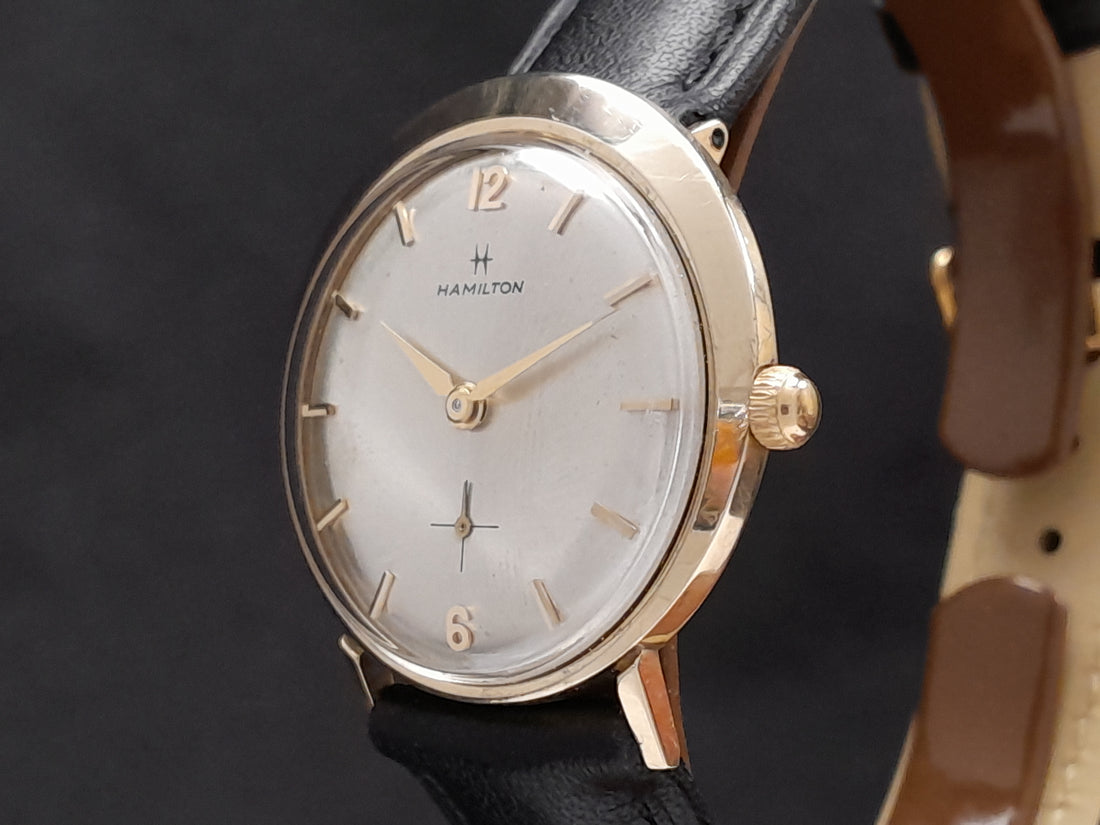1959 Hamilton Cascade | Restoration
Share

First introduced in 1959, the Hamilton Cascade was renamed the Sea Cliff in the 1960 and 1961 catalogs. The case is one of a few asymmetrical Hamilton models, with the 12 o'clock side extending past the lugs.

The case is also a monocoque case, or a one-piece case, so the crystal has to be removed to get to the dial and movement. This is done with a tool called a crystal lift. The arms of the lift squeeze the acrylic crystal just enough to loosen it from the case so that it can be lifted away.

Once the crystal is removed, the 'guts' of the watch are set free.

The Cascade came with the American made caliber 770, one of the finest manual wind movements produced. The 770 has 22 jewels. Here you can see the dial side of the movement.

And this is the watchmakers side of the movement with the bridges removed to get a peek at the train of wheels underneath.

The cap jewels are completely disassembled prior to cleaning, ensuring the heated ultrasonic machine can get at every last bit of old lubricant and schmutz.

The heat, ultrasonic waves, and special watch cleaning chemicals really do make these parts shiny.

With the jewels perfectly clean, I can lubricate the balance end stone before putting it back together. When it comes to oil, less is more, and only a very small amount is needed.

Grease is used on high friction parts, like the keyless works here.

Since this is a one-piece case, it must use a two-piece stem. This is the movement side of the stem and has a male post where the female side of the crown will fit onto.

With everything reassembled, freshly lubricated, and regulated, it's time to case this baby back up.

The Cascade is a wonderfully unique watch with incredible character. And with a 770 under the hood, with regular service, it will last more than a lifetime.
